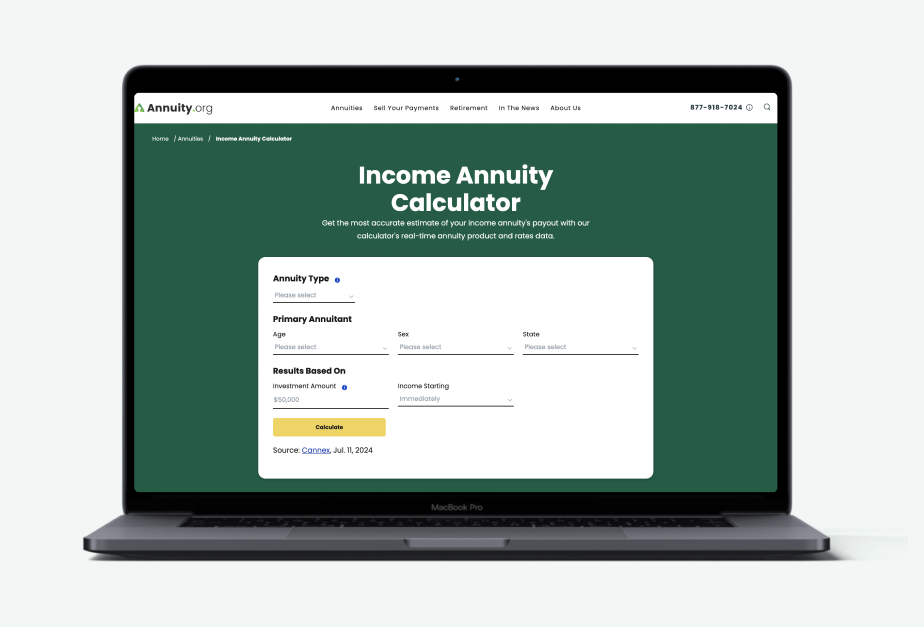What Is the Declared Rate on an Annuity?
The declared interest rate on a fixed annuity is the minimum guaranteed interest credit you can expect for the stated term. Traditional fixed annuities have successive, one-year terms, while multi-year guaranteed annuities (MYGAs) have terms that usually span between two to 10 years.
Declared rates for fixed annuities do not change during the stated term, regardless of fluctuations in the market. This protects an annuity owner from market risk but exposes them to interest rate risk and can limit growth potential.
Annuity Declared Rate Key Takeaways
- The declared rates for traditional fixed annuities are set annually, while declared rates for multi-year guaranteed annuities are usually in force for two to 10 years.
- Fixed index and variable annuities can have declared rates if they allow for a declared rate allocation. This allows annuitants to allocate contract funds across a fixed-rate component and a variable-rate component.
- Understand how your declared rate works for your specific type of annuity to avoid any unrealistic expectations.
It’s important to pay attention to when the declared rate of an annuity changes. Negative changes in declared rates can throw a wrench in your planning if not managed properly. For example, if you had a declared rate of 5% on your annuity, and then in the next period the insurance company announces a declared rate of 2%, this may be a sign to start looking for a change in product or strategy, particularly if you’re out of your surrender period.
What Is a Declared Rate Allocation?
A declared rate allocation is a structural feature that pertains to variable and fixed index annuities. In many instances, these vehicles offer annuitants the ability to allocate a portion of contract funds to a fixed-rate component and a portion to a variable-rate component.
The fixed-rate component credits interest in the same manner as a traditional fixed annuity. The variable-rate component credits interest based on the performance of underlying investments (in the case of a variable annuity) or a specified index (in the case of a fixed index annuity).
While the fixed-rate component provides a guaranteed return, the variable-rate portion offers the potential for higher earnings, depending on market performance.
For example, you could purchase a fixed index annuity with a 5-year term and allocate 30% to a fixed-rate component with a declared rate of 3%, and 70% to a variable-rate component, which is indexed to the S&P 500 index up to specified limits.
How soon are you retiring?
What is your goal for purchasing an annuity?
Select all that apply
Other Rates and Pricing Levers To Consider When Buying an Annuity
Declared rates on fixed annuities make it relatively easy to calculate the value of a contract, project its accumulation potential and forecast cash distributions. However, take proper measures to identify the stated interest crediting term and any limitations placed on the renewal rates.
When you have a fixed index annuity with a declared rate allocation, you need to be even more attentive to details. Failure to do so could result in unrealistic expectations.
Limiting Features of a Variable-Rate Component
- A fixed index annuity’s participation rate specifies the extent to which an annuitant can participate in the performance of the specified index. For example, if a fixed index annuity has a participation rate of 85% and the specified index increases by 10% during a measurement period, the interest credit will be limited to 8.5% (0.85 × 10% = 8.5%).
- A fixed index annuity’s interest rate cap puts a ceiling on an annuitant’s crediting rate. For example, if a fixed index annuity has a rate cap of 8% and the specified index increases by 20% during a measurement period, the interest credit will be limited to 8%.
- A fixed index annuity’s interest rate spread is best characterized as a hurdle that must be cleared before interest is credited to an annuity. For example, if a fixed index annuity has a rate spread of 4% and the specified index increases by 12% during a measurement period, the interest credit will be limited to 8%.
These features are not mutually exclusive. Many annuity providers offer fixed index annuities that entail a combination of participation rates, caps and spreads. The flexibility sounds great, but too much complexity can lead to suboptimal investment outcomes.





